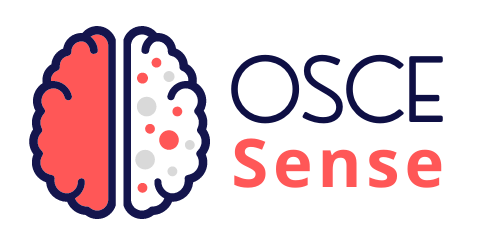
Ortho Examination 5
Station 5
It hurts but the new living room colour is to die for….
Candidate Instructions
Setting:
You are a Foundation Year doctor working in a GP. This patient has presented with elbow pain.
Name: Hayley Matterson
Tasks:
1. Perform a relevant orthopaedic examination.
2. Please state your diagnosis to the examiner.
3. Please explain your diagnosis to the patient.
4. Give your treatment plan to the patient.
Simulated Patient Instructions
Briefing
Please act as the patient and reveal signs and results only as the candidate performs actions or requests tests.
Diagnosis: RIGHT lateral epicondylitis
You are Ms Hayley Matterson, a 31 year old female.
You have presented to GP after developing severe elbow pain. It started after painting your entire living room in one evening. You are right handed.
Opening Statement
“Doctor, I painted my entire living room yesterday and let me tell you... it was worth it!!! but... now my elbow feels like it's on fire.”
Appearance and Behaviour
Please follow all the physical prompts in the mark sceme to provide prompts to the candidate. All positive symptoms listed below are ONLY in the RIGHT elbow. The left elbow is normal.
Start the Timer and Begin
Intro
Look
Please ask the candidate to examine a real model/actor. Please prompt the candidate to verbalise what they are inspecting for.
Feel
If the candidate attempts a full shoulder or wrist exam then move them along by stating “you do not need for perform a shoulder / wrist exam”.
Move
Active Movement
Passive Movement
Special Tests
Examiner Instruction
At this point please direct the candidate to move on to diagnosis and management.
Diagnosis and Investigation
Management
Submit for Scoring
Summary
Lateral epicondylitis or “tennis elbow” is a condition characterised by pain and tenderness at the lateral epicondyle of the humerus. This is the site of origin for the common extensor tendon of the forearm. It is usually caused by repetitive wrist extension, such as tennis or repetitive manual labor (like painting!). Diagnosis is primarily clinical and the need for further investigation is guided by the likelihood of alternative diagnoses such as osteoarthritis of the elbow (which would require XR). As with the rotator cuff exam in the shoulder, special tests like Cozen's, Mill's, and Maudsley's tests are important as they can help clinically distinguish epicondylitis from other differentials. In clinical practice the lateral tenderness really is clear!
Management includes rest, NSAIDs, physical therapy, and activity modification, with invasive treatments like corticosteroid injections or surgery considered for chronic, refractory cases. Prognosis is generally good with conservative management. In Hayley’s case, she made her husband paint the rest of the house and she recovered very well with simple pain relief and some rest.
Tags | Ortho | Orthopaedics | Orthopedics | Lateral Epicondylitis | Elbow | Joint Pain
Station Written by: Dr Benjamin Armstrong
Peer Reviewed by:
Want to suggest an edit?
Comment below and we'll get right to it!
